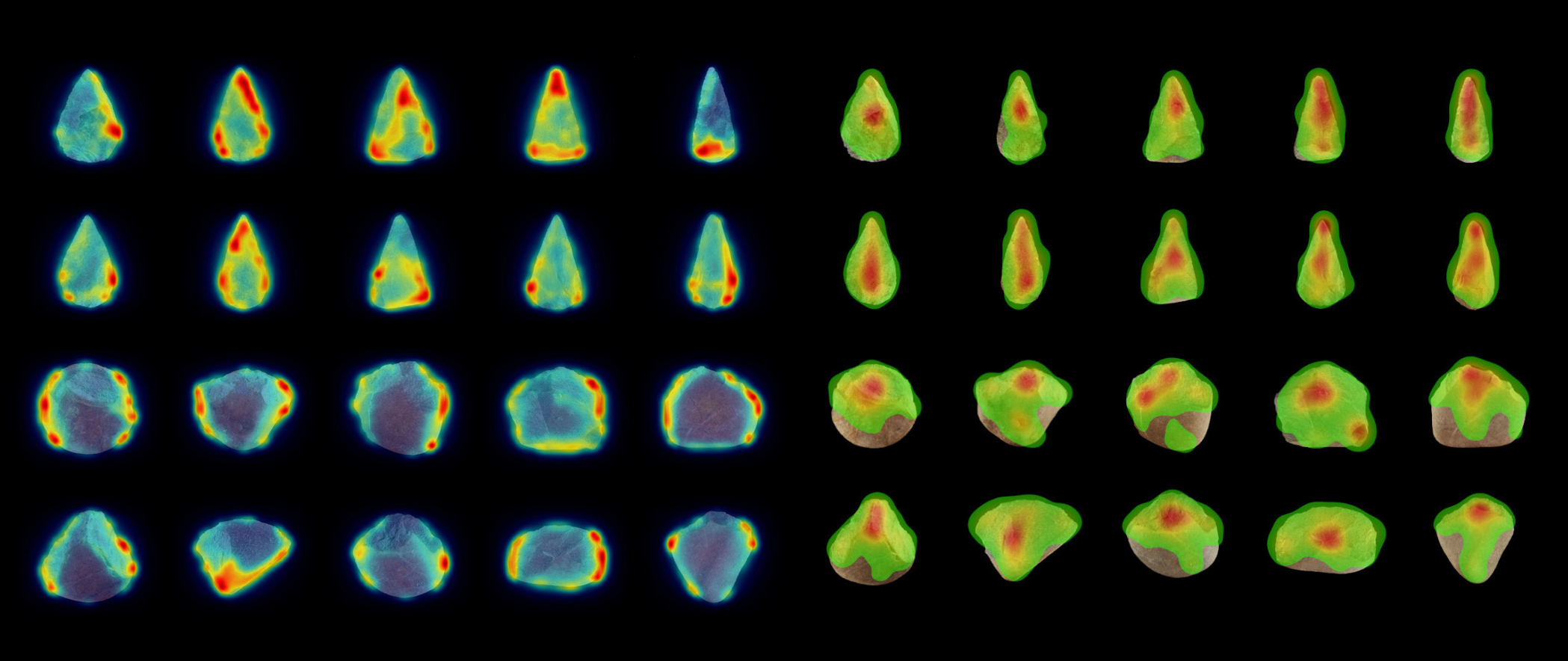NEW STUDY ON VISUAL BEHAVIOUR AND PALAEOLITHIC TOOLS
The CENIEH Paleoneurobiology Group has published a study analysing visual attention patterns during the exploration of images of stone tools or choppers and bifaces to find out to what extent attention is influenced by their morphology
SOURCE: CENIEH
The Paleoneurobiology Group of the National Centre for Research on Human Evolution (CENIEH), led by researcher Emiliano Bruner, has just published an article in PERCEPTION MAGAZINE, on visual attention patterns associated with sensory exploration of paleolithic tools (stone tools, or choppers and bifaces), to find out to what extent attention is influenced by their morphology.
The results of this work, with the collaboration of Timothy Hodgson, Professor of Psychology at the University of Lincoln (United Kingdom), suggests that the most functional regions of the tools are considered most significant and attract more attention, which may be related with the identification of affordances, that is, the characteristics of an object that inform us and allow us to carry out an action.
“The stone tools or choppers were most observed in the centre and in the upper region, while for the bifaces the gaze is distributed between the base and the tip. In general, the carved surface of both tools attracted more attention than the natural or cortical surface”, points out María Silva Gago, main author of this article.
Attention factors
There are different factors that can influence the way attention is directed towards an object or image. On the one hand, attention can be affected by "bottom up" factors, which are those visual characteristics of an image that stand out from the rest due to their sensory properties (for example, changes in colour, brightness, texture or orientation). This mechanism is known as visual prominence.
In recent years, computational models have been developed that can quantify the extent to which parts of an image are eye-catching and likely to capture attention. Thus, gaze distribution within an image has been shown to be closely correlated with the salience "maps" generated by these models.
However, attention can also be drawn to an image based on "top-down" factors, such as the importance of a certain feature or object in performing a certain function.
In this study, both prominence and visual attention were analysed in different images of stone tools or choppers and bifaces. To determine the visual prominence of these images, an algorithm was applied that breaks down the photograph into different layers such as brightness, colour and texture.
“In this way we get a map of visual prominence that is superimposed onto the image of the tool, showing those areas that should attract more attention. At the same time, we study visual attention by using eye-tracking methodology on the same images, obtaining maps that reveal the most observed areas”, explains María Silva.
Comparison of these types of maps has shown a clear difference between the areas actually observed and those considered prominent. Despite the tendency to observe the centre of an image or object (known as “centre bias”), the tools were more observed in the upper and carved areas, while the prominence maps highlighted the sides and cortical areas. Additionally, visual behaviour with natural stones and other types of objects was also analysed, proving that the visualization pattern was exclusive to stone tools.

Visual salience maps (left) and visual attention maps (right)/María Silva et al.
Reference: Silva-Gago et al. (2021). Visual attention and cognitive archaeology: an eye-tracking study of Paleolithic stone tools. Perception.